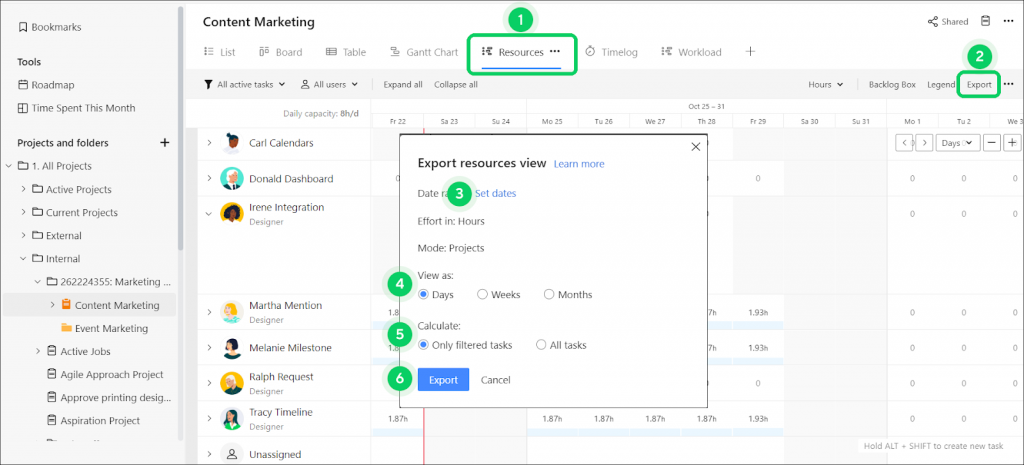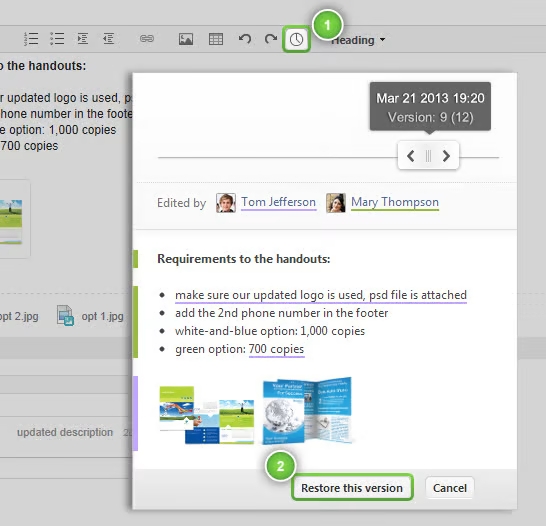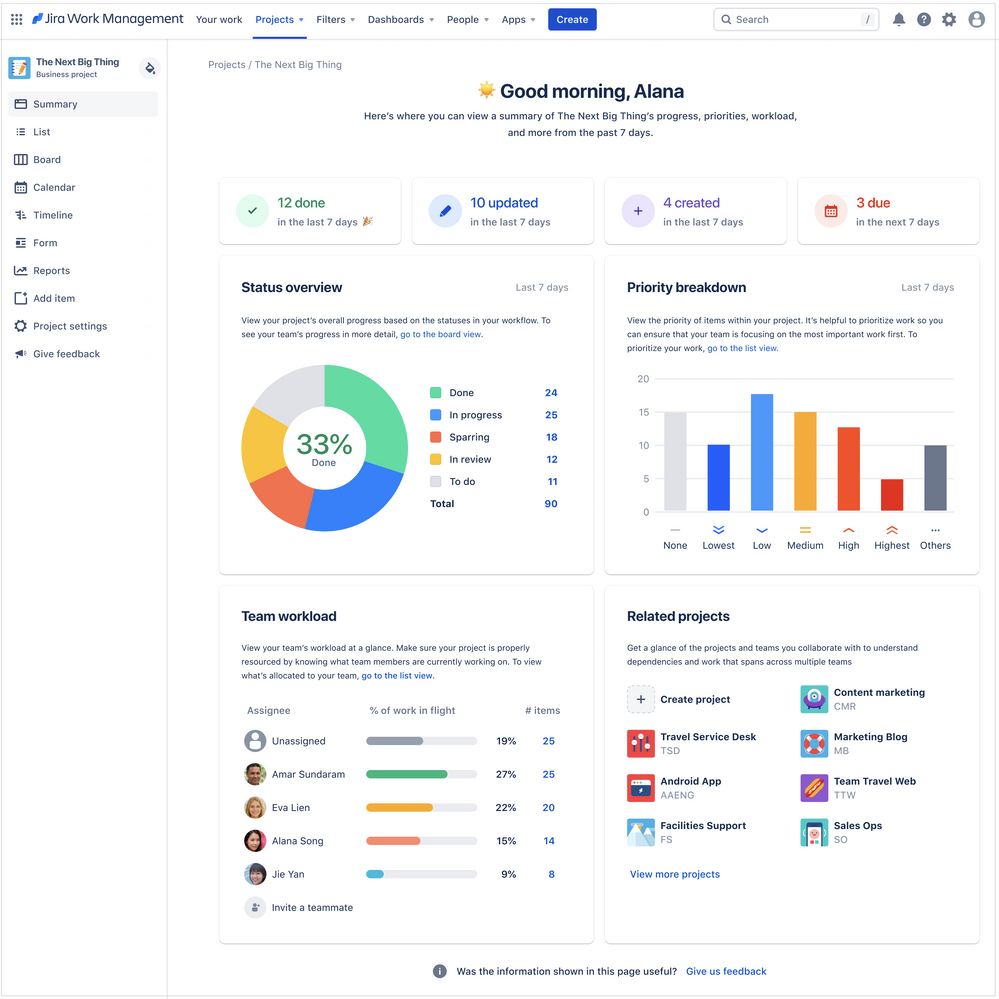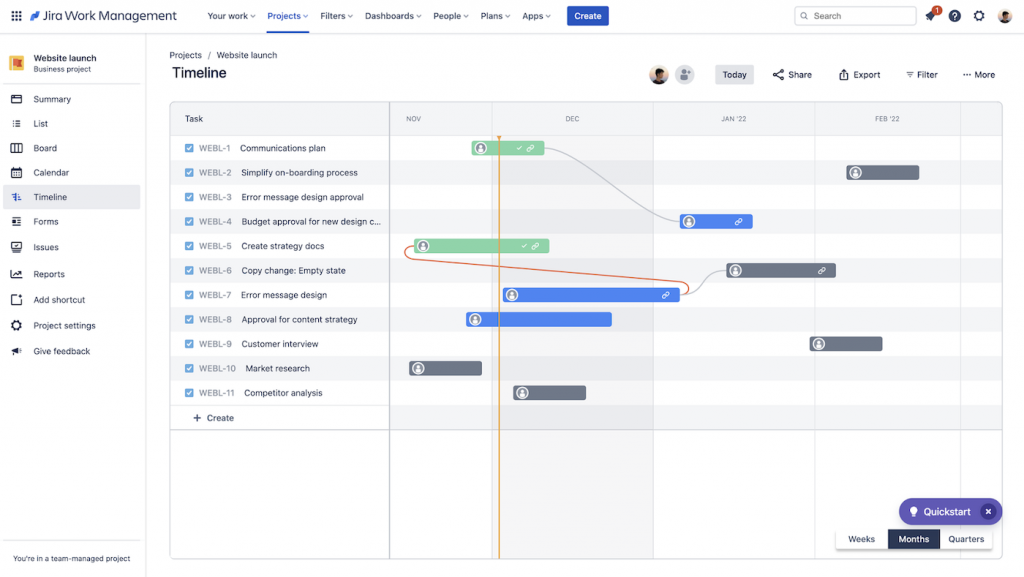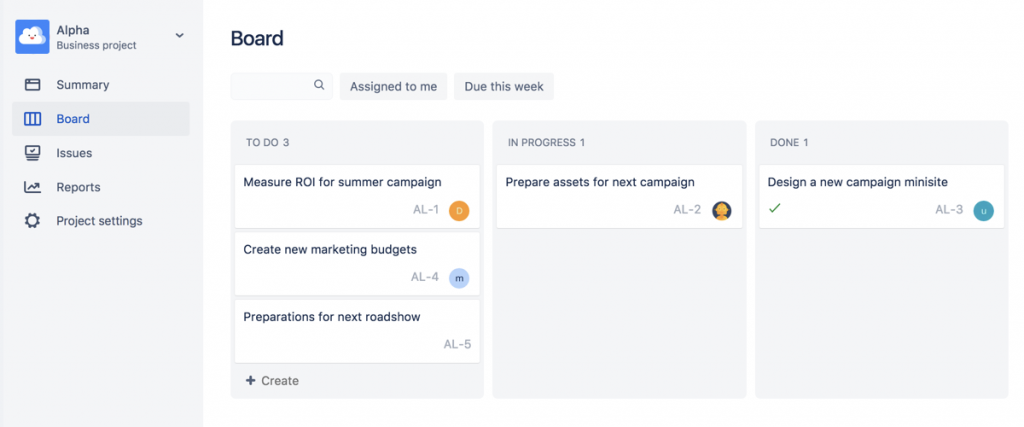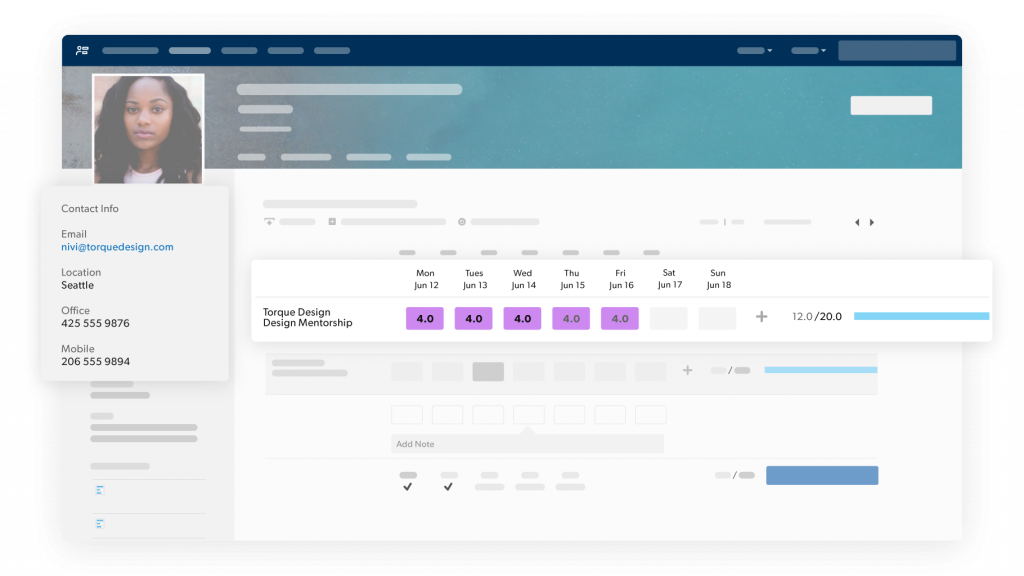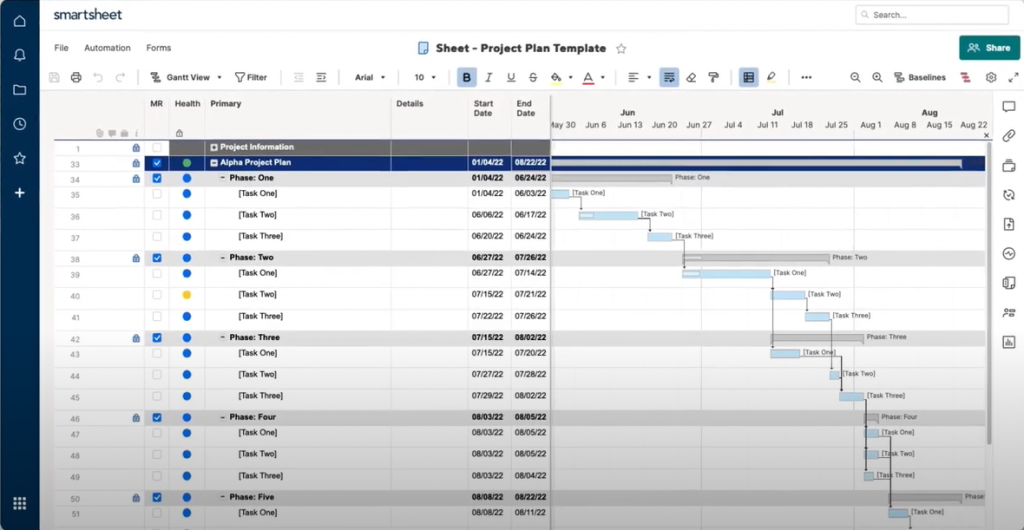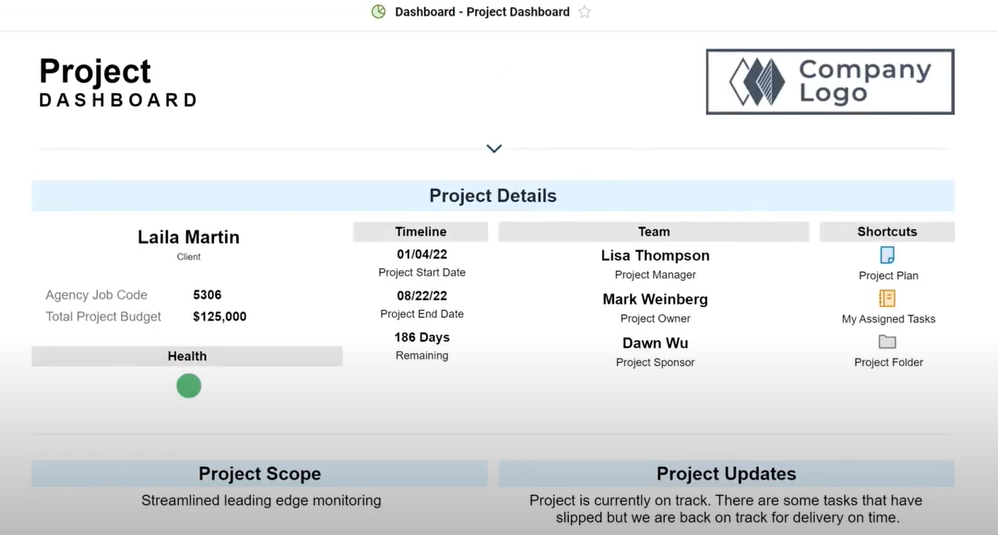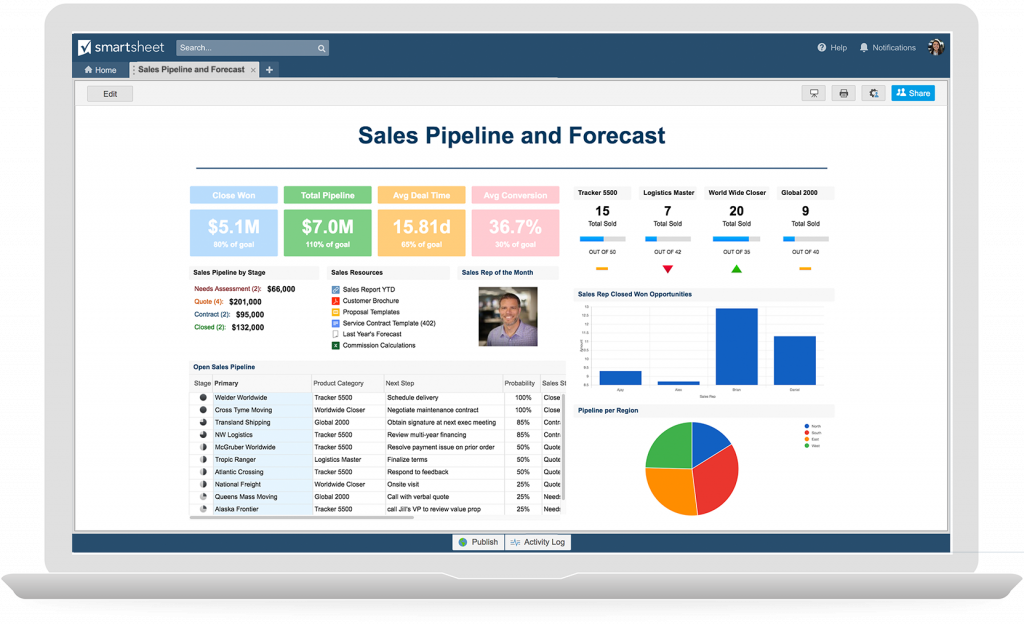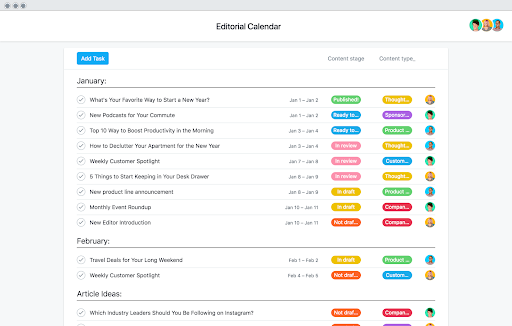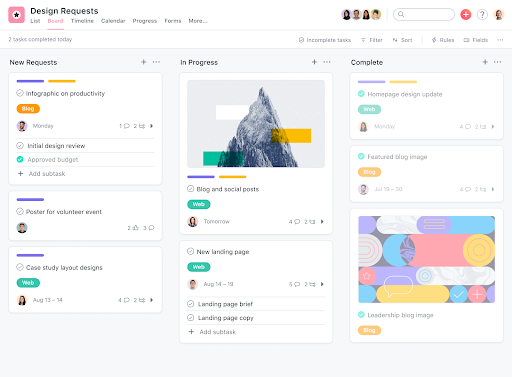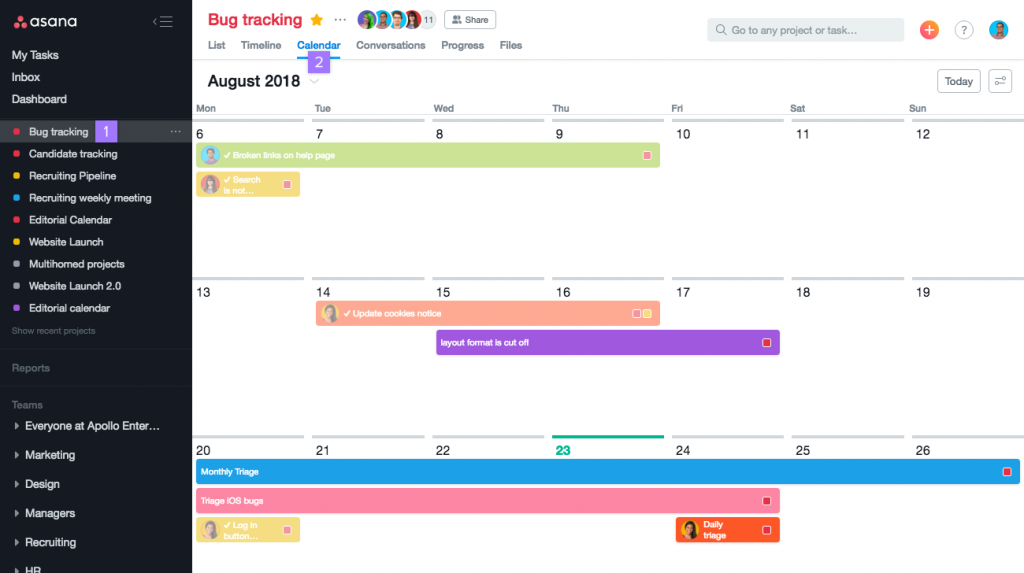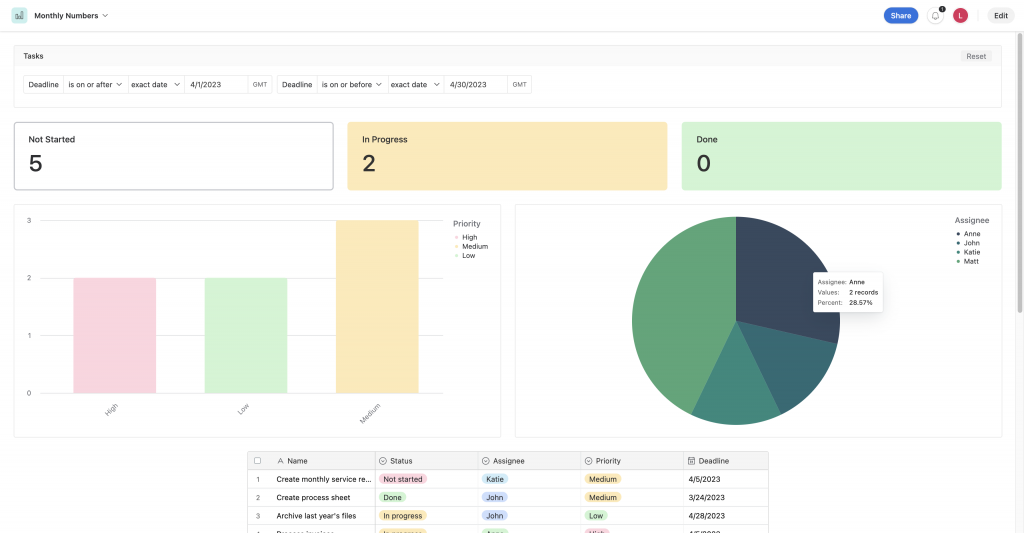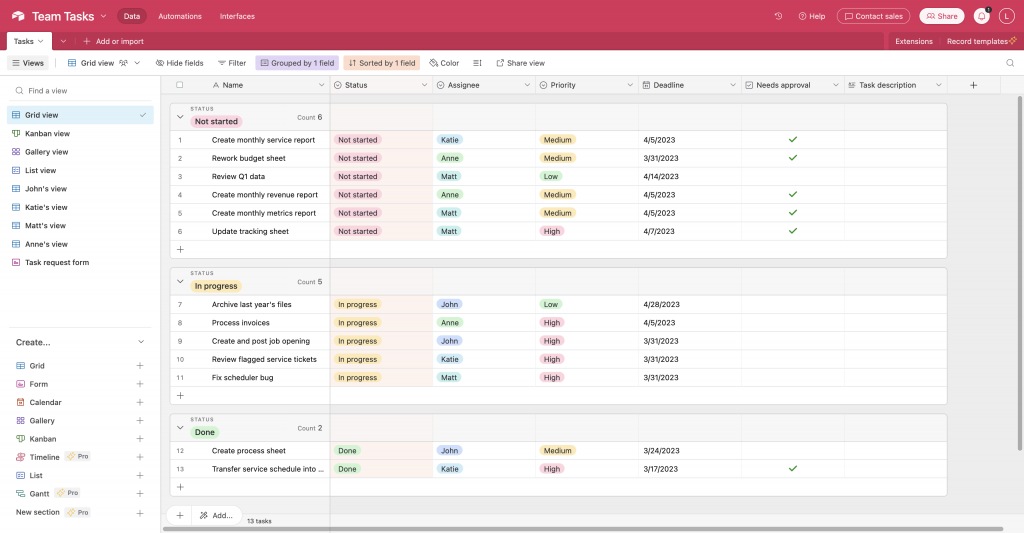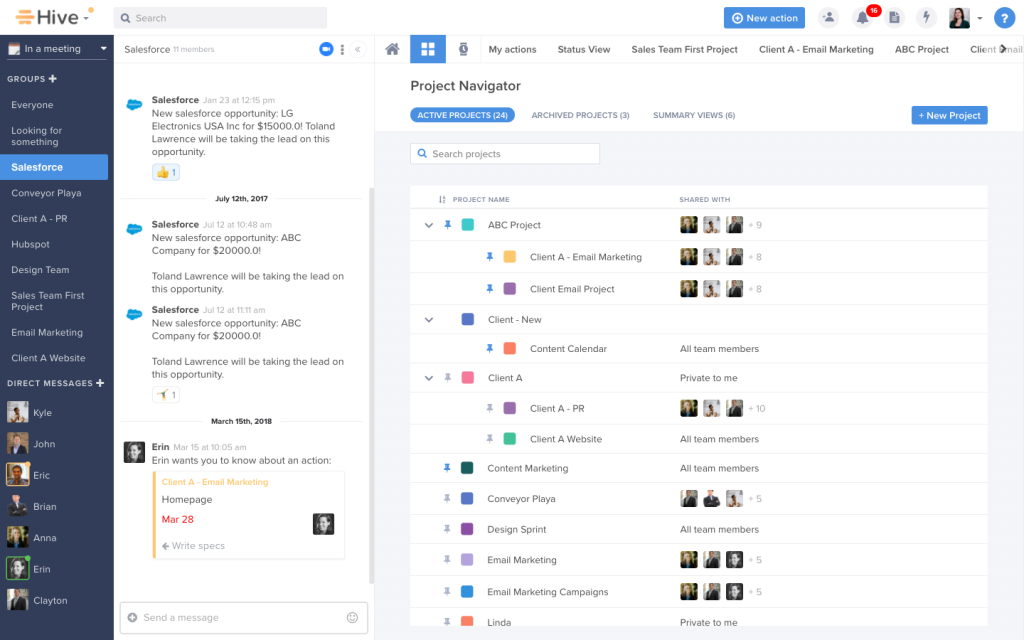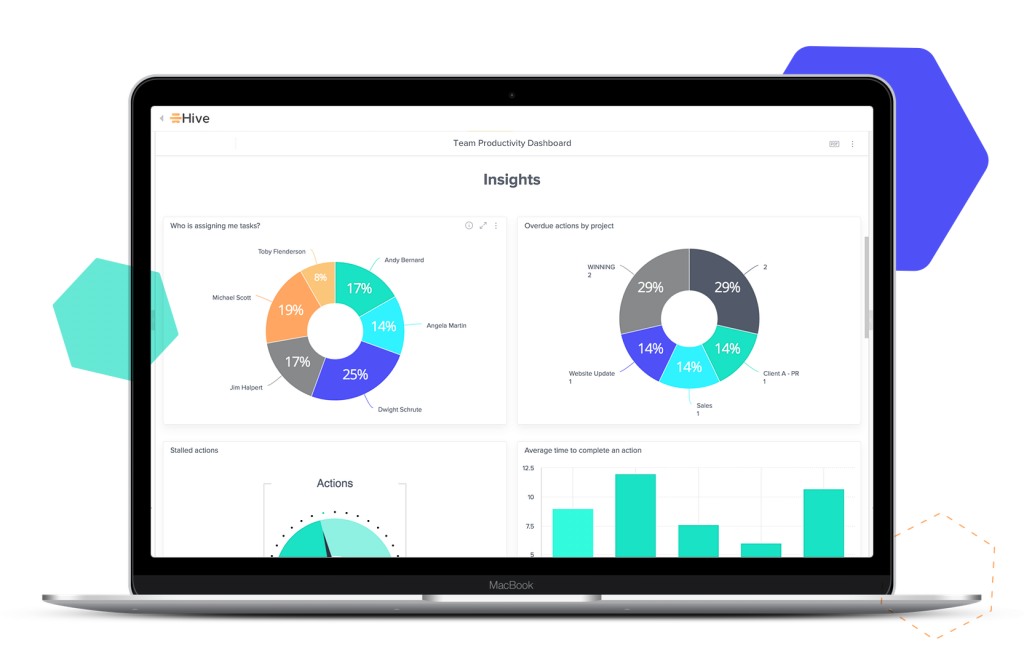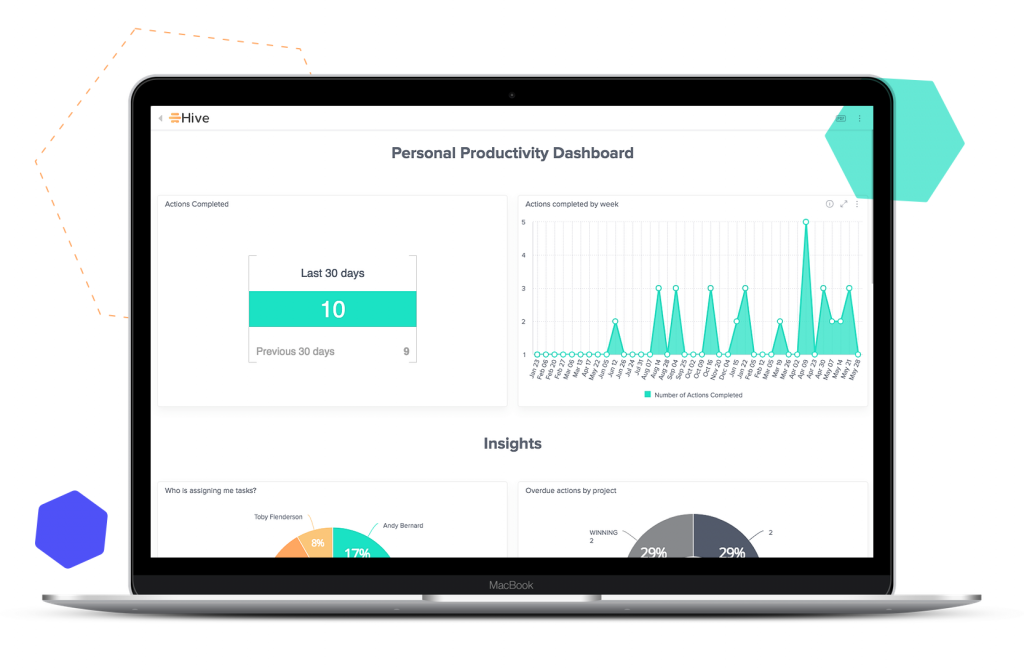These days, organizations have to juggle a host of system apps, schedules, time zones, file formats, security policies, and so much more just to complete a single project. Project Management (PM) tools like Microsoft Projects are designed to help with this, but how do you avoid simply adding another cumbersome dashboard to the tech stack?
Software solutions can only be counted as such when the software actually addresses the pain points of your use case, and no tool is designed to meet every possible need.
So, to help you find the PM platform that best meets your organization’s needs, let’s take a closer look at 7 major PM vendors, and how their app stands up to Microsoft’s offering.
- Wrike: Best for newcomers to PM software
- Jira: Best for IT and dev teams
- Smartsheet: Best for simple use cases
- Asana: Best for enterprise users
- Airtable: Best for data visualization
- Hive: Best for build-your-own PM usage
- Todoist: Best for soloprenuers and work-from-anywhere pros
Wrike – Best for newcomers to PM software

Pros
Cons
Wrike is a multi-service platform that’s cloud-based, and built to empower collaboration across decentralized and remote teams. The project management solution is designed with Agile methodology in mind, whether that’s teams of programmers or less technical departments employing a similar productivity strategy.
PM functionality is just the beginning for Wrike, though. The vendor offers additional applications for marketers, creative services, professional services, and more. Beyond the team-based verticals, the platform also offers numerous add-ons and integrations to make it easier to implement Wrike into existing processes without increasing complexity or tech bloat.
For teams looking for a flexible and adaptive solution to their project management needs, Wrike is a good place to start.
Jira – Best for IT and dev teams

Pros
Cons
Jira is project management by agile developers, for agile developers. Brought to you by the same company behind Trello, Jira is a digital scrum board that equips technical teams with all the features needed to plan, organize, track, optimize, and troubleshoot tasks and projects across every sprint.
If you’re looking for a more casual, even-the-marketing-team-can-use-it project management tool, Jira’s not for you. The solution is heavily tailored to teams that report to CIOs and CTOs, even going so far as to add bug-tracking features, just for starters.
Dashboard views are strictly scrum and kanban boards; setup and ongoing management both require a minimum level of technical know-how. And advanced controls for user permissions, security, and privacy are likely far more than other departments typically need.
With a wealth of specialized, dev-centric bells and whistles, though, Jira is perfect for teams that need to make the most of their sprints and minimize process friction for their staff.
Smartsheet – Best for simple use cases

Pros
Cons
Smartsheet is exactly what the name implies: it’s the flexibility, simplicity, and familiarity of a spreadsheet, applied to project management needs. Designed with simplicity and straightforward functionality in mind, it has a more streamlined feature set than more comprehensive platforms.
But that leaner toolset lends it to smaller, less complex use cases, and allows for speedy setup and onboarding. Paired with some of the lowest subscription fees available among leading solutions, and Smartsheet is perfect for teams that need an easy answer to their project management woes.
Asana – Best for enterprise users

Pros
Cons
Founded by former Facebook engineers, Asana was built as a direct response to the rapidly scaling growth seen in tech startups. Intended as a solution to the “meetings about meetings” problem, the platform is designed to allow teams to keep all pertinent information in a single location, reducing time spent digging through emails and shared drives.
Thanks to its robust feature set, its user-friendly design, and a wealth of knowledge in the resource library, Asana has quickly grown to be one of the foremost brands in the PM space. As a result, it also boasts one of the largest catalogs of API integration options in the market.
Asana is on the more expensive side, especially considering plans bill annually. And the platform can be overwhelming for smaller, leaner teams that may only need the kind of simple task tracking a kanban board might provide. But for growing teams that need a complete project management solution, Asana is a leading option to consider.
Airtable – Best for data visualization

Pros
Cons
A spreadsheet-based PM solution like Smartsheet, Airtable sets itself apart by providing a data-first design scheme for teams that want to focus on the numbers and raw information. The platform comes with many of the simple, easy-to-use controls as its other spreadsheet-based peers, but goes a step further by including extensive options for data visualization and reporting.
Analytics can be customized across teams and by individual users, making it a breeze to focus on the information that’s most immediately relevant, regardless of who’s logging in. And with both code-free and code-based options, complexity can be customized to meet the level of expertise available to your users.
For any team looking to make the data the start of their project management, Airtable is a solid choice.
Hive – Best for build-your-own PM usage

Pros
Cons
One of the oldest frustrations, both for businesses and for consumers, is the issue of paying for features that aren’t necessary. No one likes paying for a cable subscription just to watch live sports, and many businesses likewise don’t want an enterprise PM tool when they only need select digital functions.
Hive provides a method of building your own solution by separating a number of tools into add-ons that would normally come standard on higher subscription tiers with competitors. This pricing model works best for use cases where teams need a limited number of features that aren’t typically combined in free or low-cost subscription tiers.
Todoist – Best for soloprenuers and work-from-anywhere pros

Pros
Cons
With more and more professionals making the shift to partial or complete self-employment, tools that can help them balance both work and personal responsibilities are more valuable than ever. That’s where Todoist comes in. It’s a step up for those who have been relying on their personal Google calendar as their default scheduling assistant, without actually costing the equivalent of an employee’s salary.
Microsoft Project advantages
For years, Microsoft Project was an on-premise-only solution, like most of the Microsoft Office suite. Recently, the PM tool has been tweaked to better align with market trends, and their own Office 365 suite of applications. The result is a refreshed Microsoft Project with two variations: Project Online (which is cloud-based), and Project Pro (which is local to the device, and available offline).
While the cloud-based and on-prem variations come with the benefits and drawbacks of either format, just as any other solution would, the big advantage of using Microsoft Project in any form is how it connects to the rest of the Microsoft family of apps. Project Online and Project Pro both integrate seamlessly into Word, PowerPoint, Excel, and everything else your organization is likely using from the O365 suite of tools.
In other words, if you’re already on the Microsoft bandwagon, using Microsoft Project will likely extend and expand the value you’re getting.
Microsoft Project disadvantages
Microsoft’s proprietary integrations are both its greatest strength and its greatest weakness. Teams that lean on Microsoft tools for their stability and security will benefit from keeping everything in-house. But those that don’t will likely have little reason to prioritize Microsoft Project over other PM options.
Even those that use some or all of O365’s offerings may find Microsoft Project’s enterprise-level pricing too rich for their current budget, especially if their PM needs are relatively straightforward.
Finding the right Microsoft Project alternative for you
Which solution is the best for your team? It all depends on circumstance. No software tool has universal application across the board. The only way to find an app that will provide the needed return on investment is to match the needs and budget to the available options. Hopefully this article has helped make that effort a little easier for you and your team.
Looking for the latest in Project Management solutions? Check out our Project Management Software Buyer’s Guide.



